Geology Reference
In-Depth Information
has been in existence for at least 125 000 years (Péwé et al., 1997). Evidence from Siberia
also suggests that much permafrost originated during the Pleistocene (Gerasimov and
Markov, 1968). Perhaps some of the most dramatic evidence is the presence of limbs of
Pleistocene mammoths and other animals preserved in permafrost.
Pleistocene-age permafrost, and its implications for paleo-environmental reconstruc-
tion, is discussed in more detail in Part III.
5.6. PERMAFROST HYDROLOGY
It is generally assumed that groundwater movement in permafrost is restricted by per-
ennially- or seasonally-frozen ground. However, this assumption is only partly true
because it is not uncommon for unfrozen zones to exist in which normal groundwater
movement may occur. Following early Russian literature associated with the develop-
ment of gold mining in Siberia at the end of the nineteenth century, these unfrozen
zones are now generally termed taliks (Muller, 1943; Nekrasov, 1963; Sumgin, 1927).
The diagrammatic occurrence of groundwater in permafrost regions is illustrated in
Figure 5.10.
C
1
C
2
C
3
C
4
C
5
Shale and
sandstone
Figure 5.10.
Occurrence of different types of groundwater in permafrost areas. Legend: A, supra-
permafrost water; B, intra-permafrost water; C, sub-permafrost water; C1, karst water in solution
channels; C2, fi ssure water in fault; C3, aquifer in porous rock; C4, fi ssure water in bedrock joint;
C5, alluvial water in alluvial deposits. From Cederstrom et al. (1953), courtesy of the United States
Geological Survey.










